Here are some ways to kill apps when they freeze on your Mac.
Besides when they freeze, they are also effective when the zombie process remains and the apps do not close or interferes with the uninstallation.
- List of 6 methods and summary of difficulty and precautions
- ① Force quit the app from the keyboard shortcut (apps list display)
- ② Force quit the app from the keyboard shortcut (Direct kill)
- ③ Force quit the app from the Dock
- ④ Force quit the app from Apple menu
- ⑤ Force quit the app from “Activity Monitor.app”
- ⑥ Force quit the app from “Terminal.app”
- Reference information
List of 6 methods and summary of difficulty and precautions
| Method | Order of difficulty of operation 1 Easy <-> 6 Difficult | Precautions |
|---|---|---|
| ① Keyboard shortcut (Running apps list) | 1 | ・In rare cases, can’t be killed |
| ② Keyboard shortcut (Direct kill) | 4 | ・Confirmation screen is not displayed ・In rare cases, can’t be killed |
| ③ Dock | 2 | ・In rare cases, can’t be killed |
| ④ Apple menu | 3 | ・In rare cases, can’t be killed |
| ⑤ Activity Monitor.app | 5 | ・In rare cases, can’t be killed |
| ⑥ Terminal.app | 6 | ・High certainty, but be careful of operation mistakes |
① Force quit the app from the keyboard shortcut (apps list display)

This method is the most recommended because it is difficult to make operational mistakes!

Even when your Mac freezes and you can’t operate the mouse, there are times when you can use the keyboard.
▶ On your keyboard, lightly press ⌥ option + ⌘ command + esc at the same time.
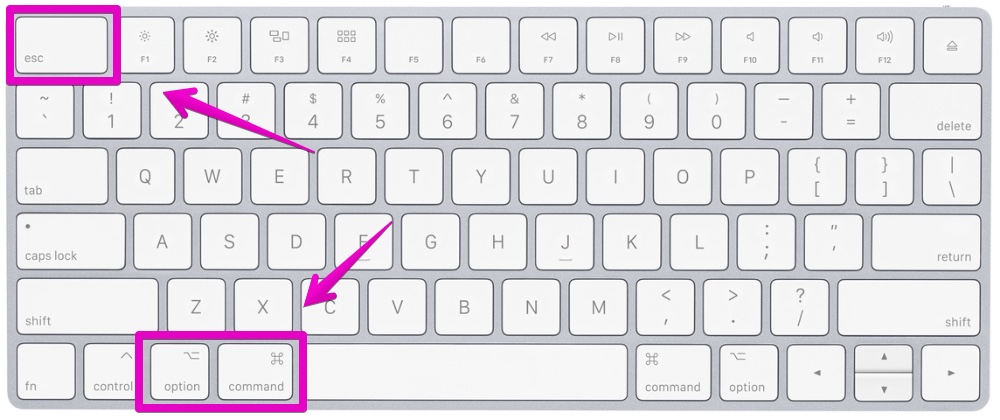
▶ A pop-up will display a list of running apps, “Force Quit Applications”, so select the app you want to forcibly terminate and click the “Force Quit” button.
The frozen app will be displayed as “not responding” as shown in the screen below.
(“App Store” does not respond in the screen below.)
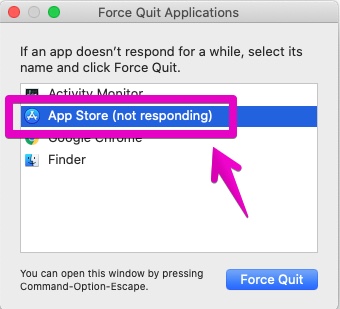
② Force quit the app from the keyboard shortcut (Direct kill)

This method does not display any confirmation screen and will be killed suddenly.
We have to be careful not to kill other apps by mistake!

Even if you edit the file using Excel, the confirmation screen for saving the file does not appear.
Therefore, be sure to save the data that would be a problem if it disappears, even if it is not an app that you want to forcibly terminate!
▶ Look at the Apple menu and make sure the app you want to kill is in the foreground.
As an example, in the screen below, “Excel” is displayed on the right side of the apple mark, so you can see that this is the front display.
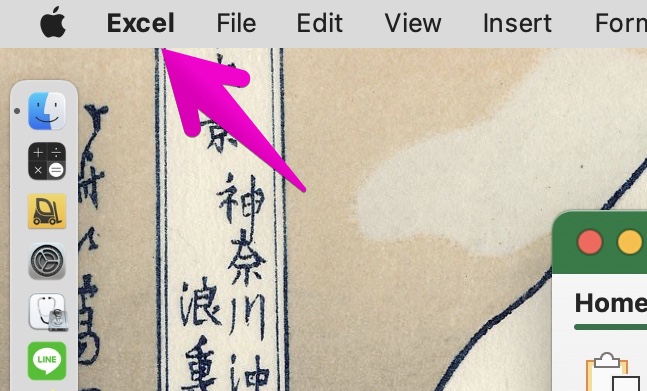
▶ On your keyboard, lightly press shift + ⌥ option + ⌘ command + esc at the same time.
The app will be forcibly terminated without displaying the confirmation screen.
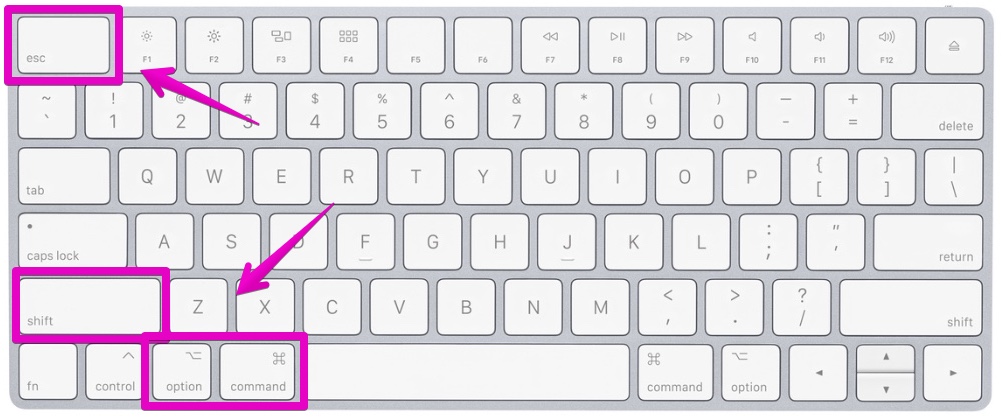
③ Force quit the app from the Dock
▶ If you press and hold the app icon on the Dock with the touchpad or left mouse click, “Force Quit” will be displayed in the menu when the app is frozen, so select it.
In the figure below, the Excel icon in the Dock have been pressed and held.
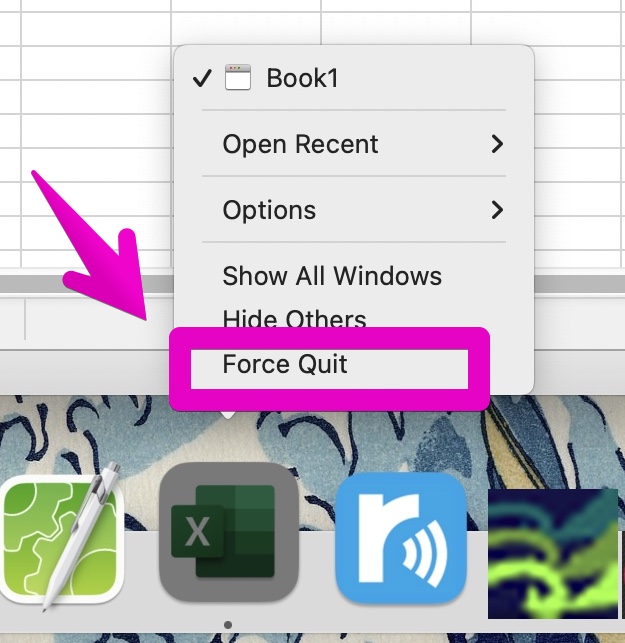
▶ If the word “Force Quit” is not displayed, hold down the touchpad or left mouse click and press the ⌥ option key on your keyboard to display it.
If “Force Quit” is displayed, select it.
【Touchpad or left mouse click】
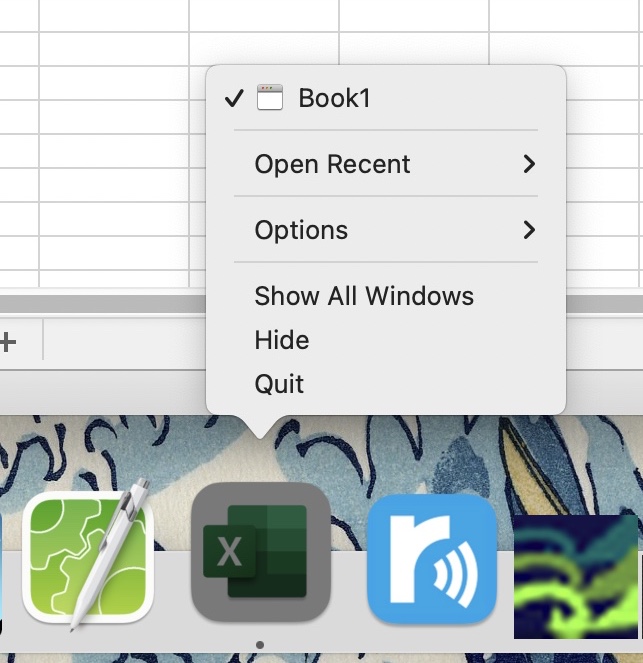
【Touchpad or left mouse click, and press ⌥ option】

④ Force quit the app from Apple menu
▶ Look at the Apple menu and make sure the app you want to kill is in the foreground.
As an example, in the screen below, “Excel” is displayed on the right side of the apple mark, so you can see that this is the front display.

▶ Click the apple mark on the upper left of your Mac and select “Apple” -> “Force Quit…” from the menu that appears.
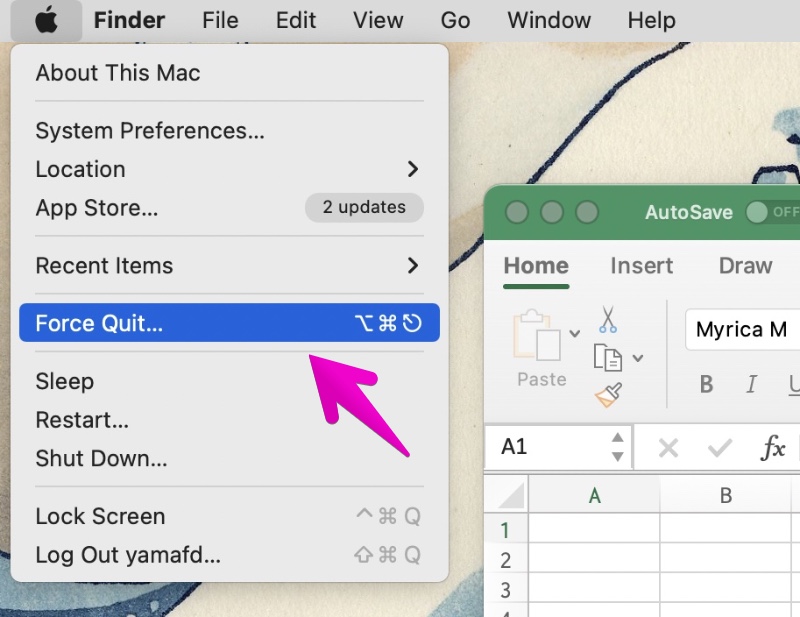
⑤ Force quit the app from “Activity Monitor.app”
▶ From the “Applications” -> “Utilities” folder in the Mac Finder, double-click “Activity Monitor.app”.
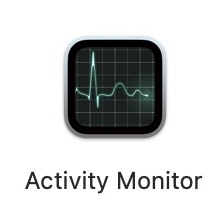
▶ When a screen like the one below opens, click to select the app you want to kill.
Then click the x mark in the upper left of the activity monitor to kill it.
⑥ Force quit the app from “Terminal.app”

This method is a little more complicated than the methods introduced so far.
But even if other methods don’t work, this method often works.

So give it a try when the other methods don’t work!

To explain this method easily, look up the number called “process ID” of the app you want to kill, specify that number, and kill it.

In addition to kill the apps that have stopped responding, it can also be used when the zombi process is resident and uninstalling the app does not work.

Be careful not to accidentally terminate another process.
So, before you kill it, save the data that you don’t want to lose!
The operation method has the following two-stage steps.
- i) Look up the “Process ID” of the app you want to kill in “Activity Monitor.app”
- ii) Kill the “Process ID” in “Terminal.app”
i) Look up the “Process ID” of the app
▶ From “Applications” -> “Utilities” folder in the Mac Finder, double-click “Activity Monitor.app”.

▶ When it starts and the following screen opens, check the number of “PID (Process ID)” of the app you want to kill.
As an example, in the screen below, the number is “25798” in Microsoft Excel.
ii) Kill the “Process ID” in “Terminal.app”
▶ From “Applications” -> “Utilities” folder in the Mac Finder, double-click “Terminal.app”.
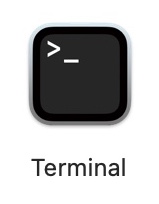
▶ When “Terminal.app” starts, type the following kill command and press return(enter).
kill (PID of the app you want to kill)
For example, if the PID is “25798”, “Terminal.app” screen will look like this:
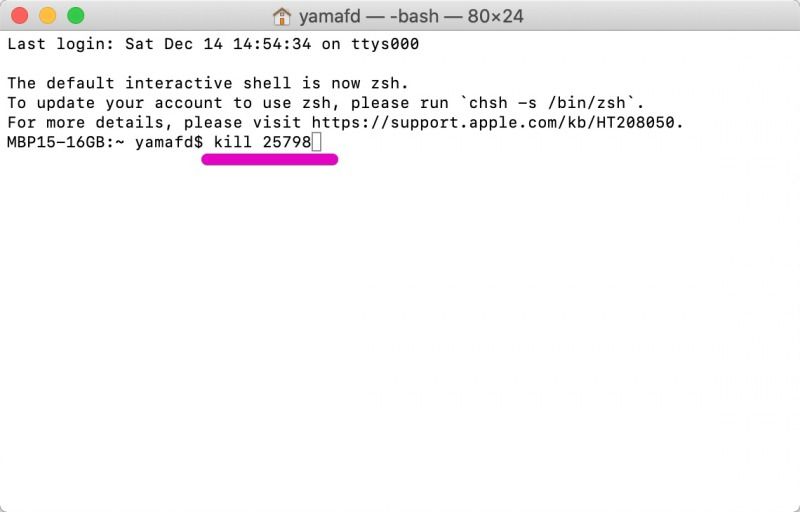

Most apps can be killed this way.
In rare cases, there are apps that cannot be killed, but in such cases, try the following command.
The -9 option of the kill command has the meaning of stronger killing than usual.
▶ In “Terminal.app”, type the following kill command and press return(enter).
kill -9 (PID of the app you want to kill)
For example, if the PID is “25798”, “Terminal.app” screen will look like this:
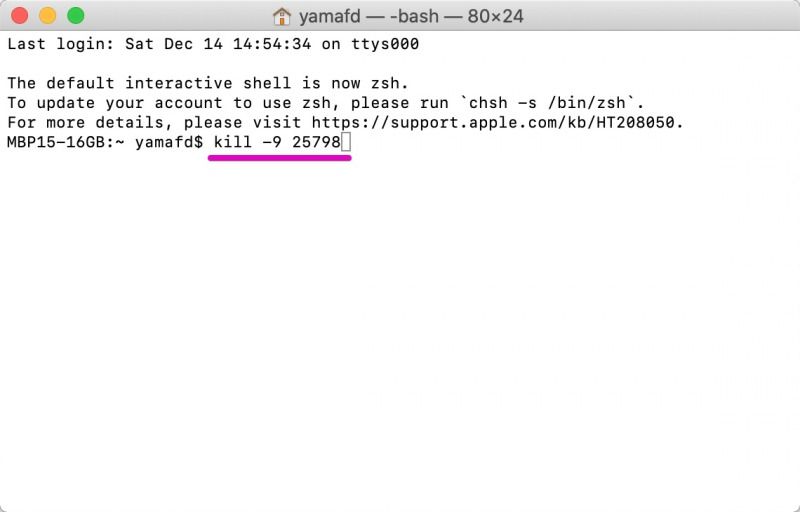
Reference information

This is the end of this article.


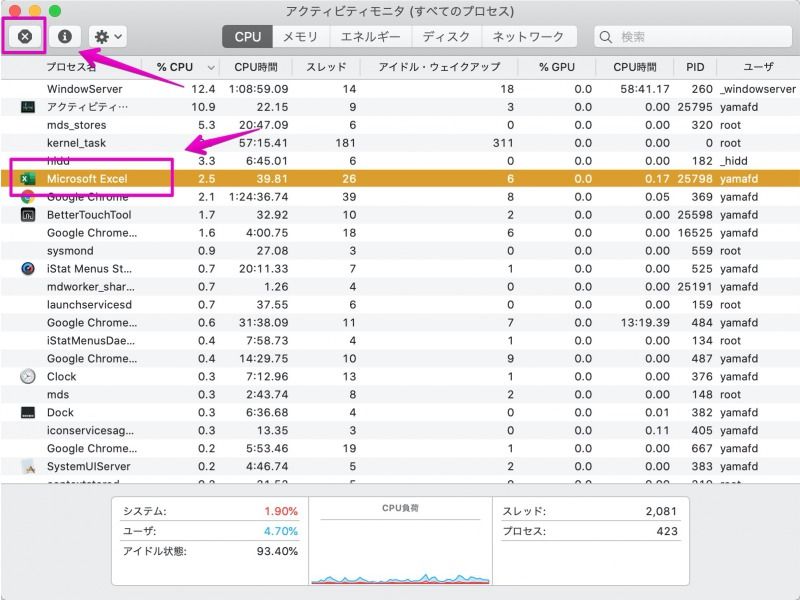
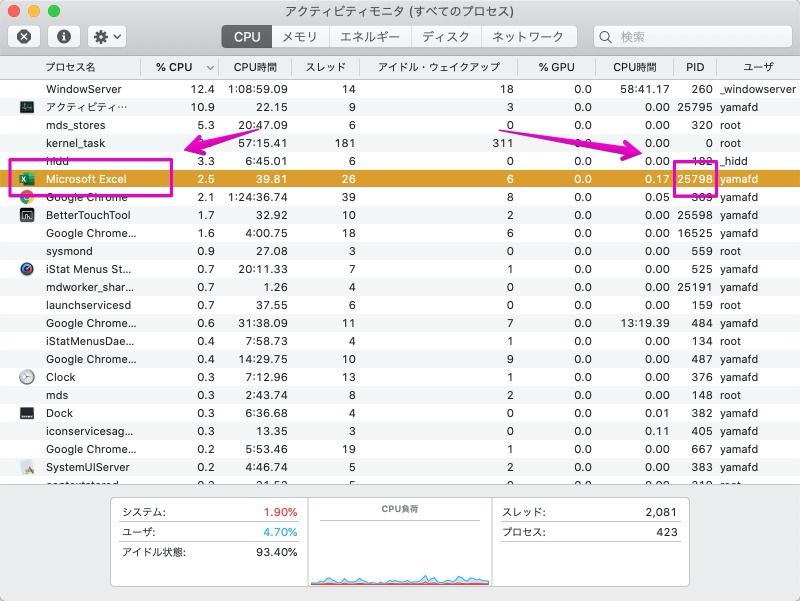


コメント